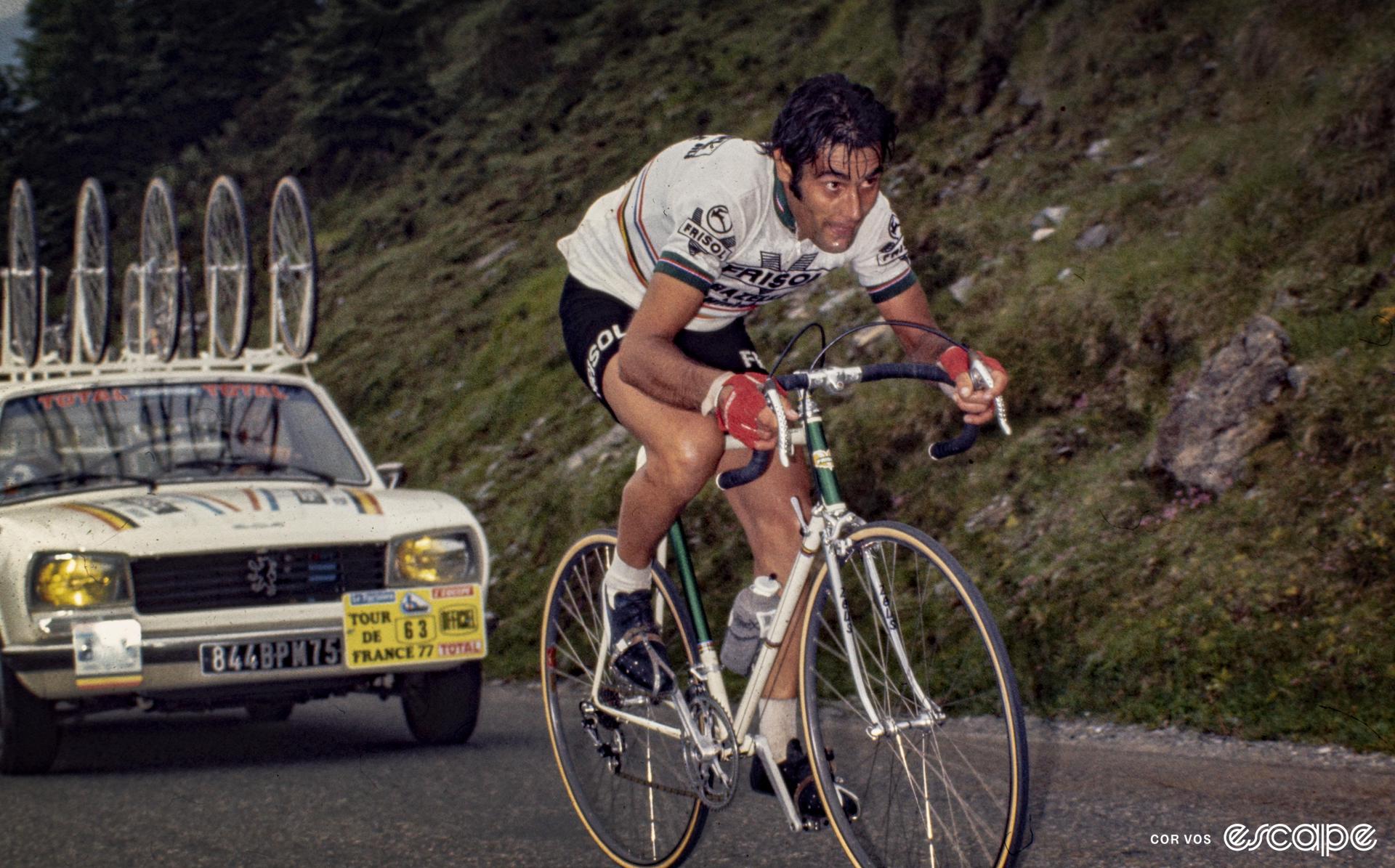We race from Mont-de-Marsan to Bordeaux today so we will absolutely talk wine later. There is even an entire wine museum in our finish town. But first we celebrate an honorary inhabitant of Mont-de-Marsan.
Luis Ocaña was the son of Spanish immigrants who settled in the department of Gers in the Midi-Pyrenées. In 1963, after some initial success on the bike, Ocaña moved to Mont-de-Marsan when he was 18 years old. The president of the local club had spotted Ocaña in the region. Thanks to his numerous wins in the amateur ranks, notably in the mountains and in time trials, his opponents nicknamed him ‘the Spaniard of Mont-de-Marsan’.
Ocaña turned pro in 1968 with Spanish team Fagor and chose to keep his original nationality. His first big successes came the following year. From 1970, when he won the Vuelta a España, he established himself as one of Eddy Merckx's main rivals. In the 1971 Tour de France, he truly established his legendary status. Ocaña managed to hold on to the yellow jersey despite endless attacks by Merckx. However, he was forced to abandon after a crash on the Col de Menté.
Bad luck would follow him throughout his life but the ‘Spaniard from Mont-de-Marsan’ did eventually win the Tour de France in 1973. Sadly, for him it is always mentioned that Merckx didn’t start that year because he preferred the Giro d'Italia and Vuelta. Apparently, the Tour organizers didn’t really make Merckx feel all that welcome.
Ocaña never reached the same heights again. His post-cycling career was marked by accidents, health problems, and financial difficulties that led him to take his own life in 1994.
In less tragic matters, today's finish town of Bordeaux is home to Cité du Vin, or Wine City. National Geographic ranks it one of the top museums in the world. If you want to see everything on offer you can spend up to nine hours here, according to the website. Naturally there is a glass of wine included in your visit.
The museum is also very well suited to children. Being French, wine is part of the upbringing, I guess. We already learned that King Henry IV was baptized with wine on his infant lips. The museum’s website doesn’t mention whether kids can also get the complimentary glass of wine or whether it means double the fun for the parents. I reckon it’s the latter. Pets on the other hand are forbidden.
On the seventh floor we have the Le 7 Restaurant where they have a wine list of 500 bottles. You have a spectacular view on Bordeaux and although it’s not super bon marché it’s actually not that expensive. Says a Dutch person.
Talking about money, one of the most expensive wines in the world is from the Bordeaux region. It’s the world-renowned Château Lafite-Rothschild. In November 2010, the famed 1869 vintage sent ripples through the industry when a 750 ml bottle sold for $233,973 at a Sotheby’s auction in Hong Kong. It surpassed its $8,000 estimate and set a new world record.
That day, 2,000 bottles from the famed winery’s cellars were sold, totaling over $8.5 million. The record has since been broken by a wine from Burgundy. Half a million. For a bottle.
Did we do a good job with this story?


